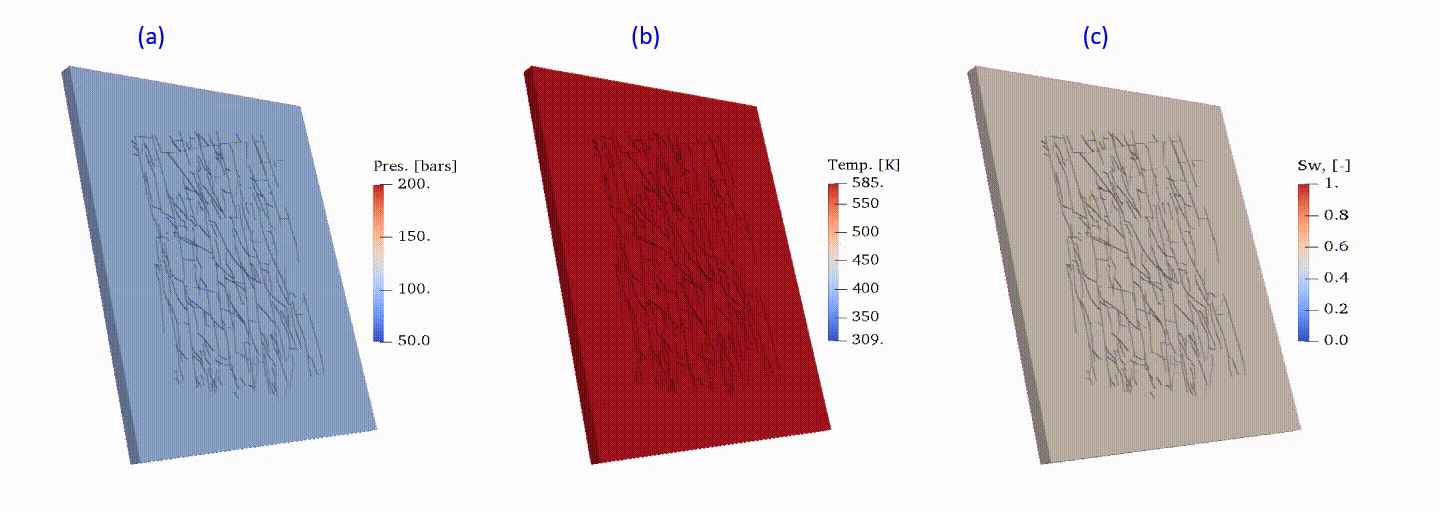Multi-phase mass and heat transfers are ubiquitous for modelling of the most energy-related subsurface applications. The presence of complicated fractures may significantly impact, or even determine, the dynamic transport process. Here, the multi-phase flow in a fractured high-enthalpy geothermal reservoir is numerically investigated. The utilized fracture network is sketched and scaled up from digital maps of an outcrop at Whitby Mudstone Formation. The discrete fracture model (DFM) is used to describe the fractured system. Complicate nonlinear physics is adopted to describe the phase transition process (i.e., steam condensation) initiated with cold water injection. The existence of the fracture network magnifies the uncertainty of heat transfer in the reservoir because of a wide range of fracture scales and the complex fracture geometry. To fulfil both accuracy and efficiency in the computation, the resolution of the grid is optimized through results and runtime comparison combined with detailed convergence analysis among different sets of grids. The results of energy depletion in typical carbonate reservoir is shown in Fig.7 for high-enthalpy (super-saturated steam) initial conditions. 
Fig.7: Energy depletion in a carbonate fractured reservoir: pressure (a), temperature (b) and liquid saturation (c).
With the optimal mesh resolution, we investigated the influence of flow rate and thermal parameters on thermal propagation, which are found to be sensitive to the flow rate, rock heat conductivity and heat capacity8 as shown in Fig.8. The findings provide insights for the multi-phase mass and heat transport in the fractured high-enthalpy geothermal reservoirs, which can be taken as guidance for the real geothermal developments with uncertainties. 
Fig.8: Variation of the double lifetime with three factors: heat capacity (a), heat conductivity (b) and flow rate (c).
